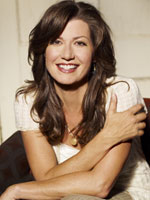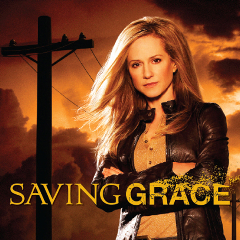Since Saturday is the winter solstice, the shortest day of the year, I thought I’d include this very informative article just forwarded to me by Deb Caldwell, one of the Beliefnet brains behind Beyond Blue. (If I haven’t mentioned her before, I should have).
It’s written by Richard A. Friedman, a professor of psychiatry at Weill Cornell Medical College.
I meant to write more on the solstice because it is an important day for all of us who suffer from depression: Starting on Saturday, the days get longer! Yahoo!! Beyond Blue reader Lapatosu marks the solstice with a celebration. I thought this was a wonderful idea (for next year) … a party or tradition welcoming the light back. Or something like that. Here’s the article ….
In a few days, the winter solstice will plunge us into the longest and darkest night of the year. Is it any surprise that we humans respond with a holiday season of relentless cheer and partying?
A major biological signal tracking seasonal sunlight changes is melatonin, a brain chemical turned on by darkness and off by light. Dr. Wehr and Dr. Rosenthal found that the patients with seasonal depression had a longer duration of nocturnal melatonin secretion in the winter than in the summer, just as with other mammals with seasonal behavior.
It doesn’t work for everyone, though. As daylight wanes, millions begin to feel depressed, sluggish and socially withdrawn. They also tend to sleep more, eat more and have less sex. By spring or summer the symptoms abate, only to return the next autumn.
Once regarded skeptically by the experts, seasonal affective disorder, SAD for short, is now well established. Epidemiological studies estimate that its prevalence in the adult population ranges from 1.4 percent (Florida) to 9.7 percent (New Hampshire).
Researchers have noted a similarity between SAD symptoms and seasonal changes in other mammals, particularly those that sensibly pass the dark winter hibernating in a warm hole. Animals have brain circuits that sense day length and control the timing of seasonal behavior. Do humans do the same?
In 2001, Dr. Thomas A. Wehr and Dr. Norman E. Rosenthal, psychiatrists at the National Institute of Mental Health, ran an intriguing experiment. They studied two patient groups for 24 hours in winter and summer, one group with seasonal depression and one without.
Why did the normal patients show no seasonal change in melatonin secretion? One possibility is exposure to industrial light, which can suppress melatonin. Perhaps by keeping artificial light constant during the year, we can suppress the “natural” variation in melatonin experienced by SAD patients.
There might have been a survival advantage, a few hundred thousand years back, to slowing down and conserving energy — sleeping and eating more — in winter. Could people with seasonal depression be the unlucky descendants of those well-adapted hominids?
Regardless, no one with SAD has to wait for spring and summer to feel better. “Bright light in the early morning is a powerful, fast and effective treatment for seasonal depression,” said Dr. Rosenthal, now a professor of clinical psychiatry at the Georgetown Medical School and author of “Winter Blues” (Guilford, 1998). “Light is a nutrient of sorts for these patients.”
The timing of phototherapy is critical. “To determine the best time for light therapy, you need to know about a person’s individual circadian rhythm,” said Michael Terman, director of the Center for Light Treatment and Biological Rhythms at the Columbia University Medical Center.
People are most responsive to light therapy early in the morning, just when melatonin secretion begins to wane, about eight to nine hours after the nighttime surge begins.
How can the average person figure that out without a blood test? By a simple questionnaire that assesses “morningness” or “eveningness” and that strongly correlates with plasma melatonin levels, according to Dr. Terman.
The nonprofit Center for Environmental Therapeutics has a questionnaire on its Web site (www.cet.org).
Once you know the optimal time, the standard course is 30 minutes of fluorescent soft-white light at 10,000 lux a day. You may discover that you are most photoresponsive very early, depending on whether you are a lark (early to bed and early to rise) or an owl.
The effects of light therapy are fast, usually four to seven days, compared with antidepressants, which can take four to six weeks to work.
For treatment while sleeping, there is dawn simulation. You get your own 90-minute sunrise from a light on a timer that starts with starlight intensity and ends with the equivalent of shaded sun. This is less effective than bright light.
It may sound suspiciously close to snake oil, but the newest promising therapy for SAD is negative air ionization. Dr. Terman found it serendipitously when he used a negative ion generator as a placebo control for bright light, only to discover that high-flow negative ions had positive effects on mood.
Heated and air-conditioned environments are low in negative ion content. Humid places, forests and the shore are loaded with them. It makes you wonder whether there is something, after all, to those tales about the mistral and all those hot dry winds, full of bad positive ions, that supposedly drive people mad.
Of course, you might decide to drop the light and ions and head for a sunny, tropical vacation.

